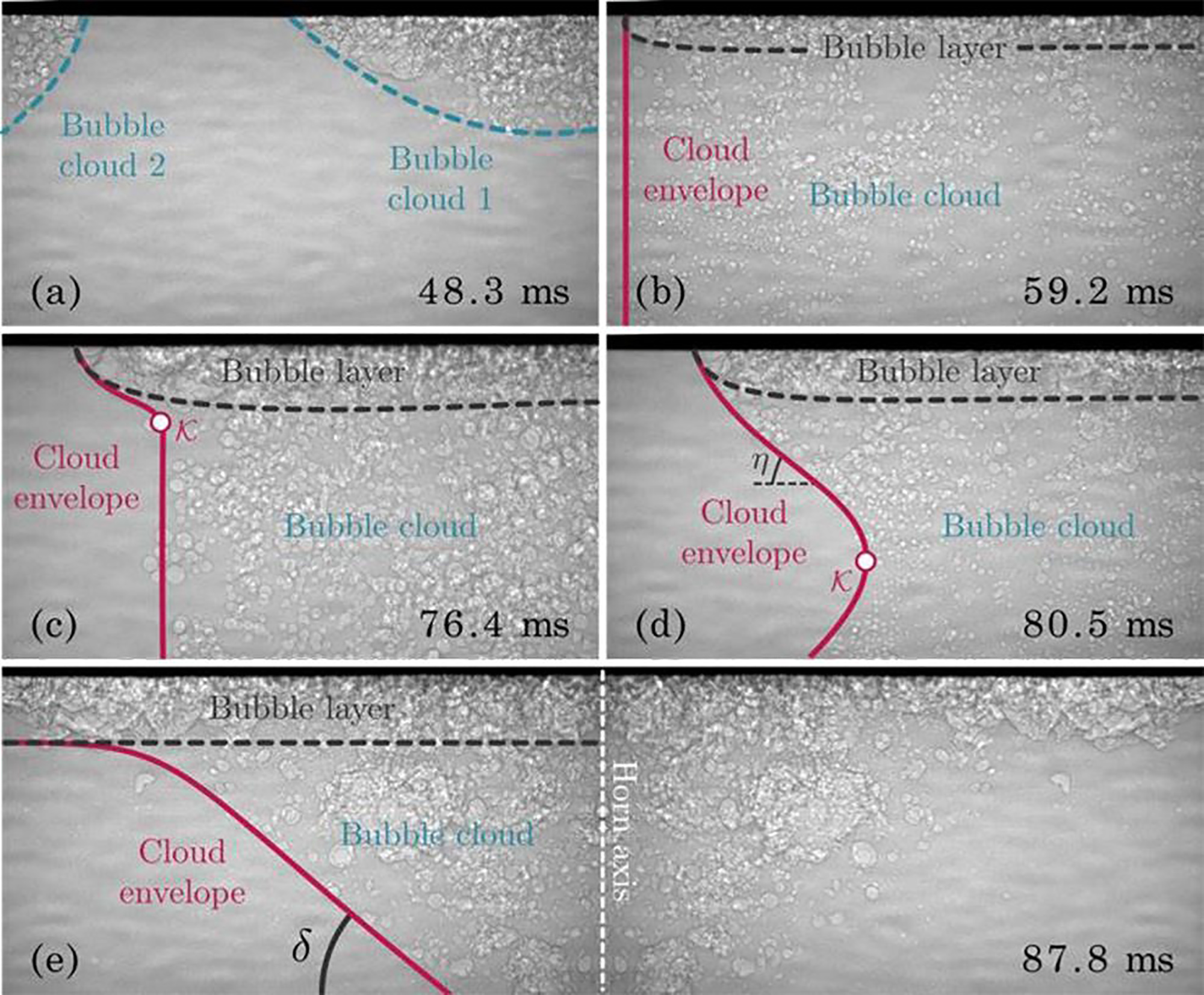Onset of Ultrasonic Horn Cavitation

Phenomenology of the conical cloud formation. The right-hand side corresponds to the horn axis. (a) Individual clouds. (b) Cylindrical cloud and bubble layer. (c) Appearance of a kink on the cloud envelope. (d) Traveling of the kink and formation of the hourglass shape. (e) Mirrored image of the cone-shaped cloud. The image width is 6.0 mm.
High-power ultrasonic horns operating at low frequency are known to generate a cone-shaped cavitation bubble cloud beneath them. Our recent analysis based on time and space resolved radiographs has revealed the intricate formation process of the cone shape. Observations indicate a three-step phenomenology: i) inception and oscillation of single bubbles, (ii) individual cloud formation under splitting or lens effects, and (iii) cloud merging leading to the formation of a bubble layer and, eventually, to the cone structure due to the radial pressure gradient on the horn tip. More details can be found external pageherecall_made.
